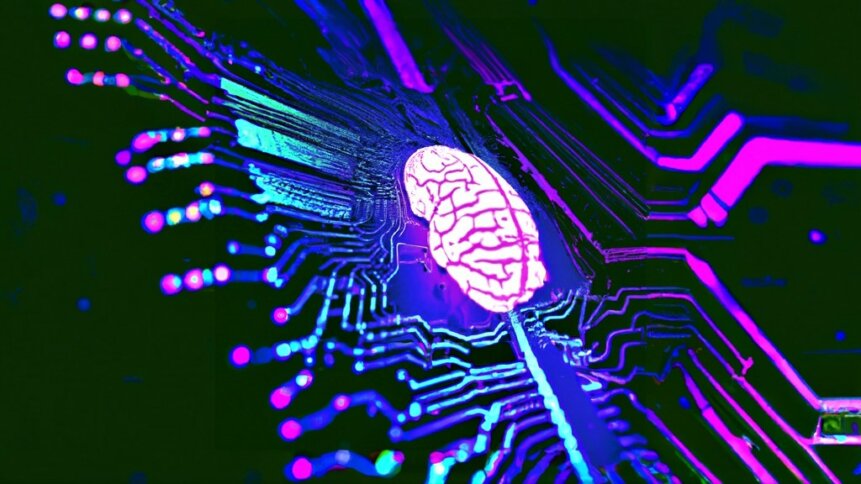Scramble to regulate AI emphasizes need for neurotech governance

|
Getting your Trinity Audio player ready...
|
The scramble to regulate AI highlights what can happen when governments get caught out by the pace of technology development. The ramifications of letting advanced chatbots run wild are serious and could – if left unchecked – pose a threat to democracy and radically alter the job market. But the march of technology doesn’t stop there, as progress in measuring brain activity spills into consumer devices, which explains why neurotech governance is also moving up the agenda.
What is neurotechnology?
According to the International Bioethics Committee of UNESCO (IBC), neurotechnology is the field of devices and procedures used to access, monitor, investigate, assess, manipulate, and/or emulate the structure and function of the neural systems of animals or human beings.
And leaders in the community met this month at the UNESCO headquarters in Paris, France, to consider an ethical framework to protect and promote human rights and fundamental freedoms. Neurotech governance is becoming pressing as devices edge closer to being able to decipher normally hidden thoughts.
“The sector is growing at an unprecedented rate, and with a neurotechnological revolution on the horizon, societies must confront unique ethical concerns related to human identity, human dignity, freedom of thought, autonomy, privacy, and well-being,” summed up the IBC.
Sitting at the intersection of neuroscience, engineering, data science, information and communication technology, and AI, there are multiple advances driving neurotech’s dramatic progress. It’s estimated that the total amount invested in neurotech firms reached $33.2 billion in 2021.
Thoughts are private
On TechHQ, we’re written about how generative AI can read your mind, if you let it. Large language models can fill in the gaps between snapshots of brain activity by applying next-word prediction to non-invasive fMRI recordings.
The study was performed on willing volunteers, and letting your mind wander is enough to confuse the current setup. But the results hint at a future where hidden thoughts and feelings may become more visible to the outside world.
What's the future of Neurotechnology? Neural implants to become superhumans?
In this @UNESCO Neurotechnology podcast episode, Frédéric Gilbert, Professor of Philosophy at @UTAS_, uncovers the effects of Neurotechnology on real participants: https://t.co/Xa6mPmPeCz #NeuroEthics pic.twitter.com/yW0ORsf7aB
— UNESCO 🏛️ #Education #Sciences #Culture 🇺🇳 (@UNESCO) July 14, 2023
Also, by decoding and altering perception, behavior, emotion, cognition, and memory, neurotech has the potential to radically disrupt what it means to be human. And experts have been compiling neurotech governance terms for some time. For example, neurosecurity was defined more than a decade ago as “the protection of the confidentiality, integrity, and availability of neural devices from malicious parties with the goal of preserving the safety of a person’s neural mechanisms, neural computation, and free will”.
But fears of brain hacking shouldn’t grind progress to a halt.
Consumer neurotech inflection point
Recent patent filings can present an intriguing vision of the future of consumer neurotech. And Nita Farahany – a leading scholar on the ethical, legal, and social implications of emerging technologies, who attended UNESCO’s Paris meeting, and is the author of ‘The Battle for Your Brain’ – notes that the collection of brain data could be poised to become much more widespread.
Patent application 20220240016 [PDF] – enigmatically titled ‘Wearable Electronic Device’ – made by iPhone maker Apple to the USPTO in 2022, appears to show a smart sleeping mask with neurotechnology aspirations, amongst other health monitoring features.
Clause 27 of Apple’s 16-page patent filing states that, “Sensors may include…electroencephalograph (EEG) sensors for measuring electrical activity in the user’s brain.” The inventors go on to describe a host of other measurement capabilities made possible thanks to eye-monitoring electronics and other biometric sensors for observing muscle contractions.
In 2019, Facebook bought brain computing start-up CTRL labs. And the acquisition gave the social media giant access to specialist neurotech expertise – in this case, knowledge of how to build a wristband for operating digital products using electrical signals from the wearer’s spinal cord.
The specification of upcoming gadgets points to an increase in the number of consumer neurotech devices capable of monitoring brain activity at some level. And, as products hit the market, users will need to pay even more attention to privacy policies.
While medical devices are highly regulated and strong privacy protection exists between patient and doctor, these rules only stretch so far – for example, smart watches, consumer-grade sleep monitors, and other fitness gadgets aren’t medical devices.
Performance differences become clear when comparing the capabilities of consumer neurotech with much higher-resolution, state-of-the-art medical imaging technology. But even crude measurements could present new threats if positive or negative responses captured from wearers of EEG earbuds and other device configurations are used as attack vectors to gain personal information.
Neurotech – a force for good
The risks of being able to acquire brain data and interpret those signals needs to be managed through responsible neurotech governance. But at the same time, it’s important not to constrain neurotech development, as – in the right hands – solutions are a force for good.
There are many amazing examples of how creating a direct communication pathway between the brain’s electrical activity and external hardware can dramatically improve people’s lives. So-called brain-computer interfaces (BCIs) can restore sensory-motor functions in patients that have suffered neuromuscular damage, and the results are profound.
Conor Russomanno – CEO and co-founder of OpenBCI, a creator of open-source tools for biosensing and neuroscience – outlines how the process works. The first step is to find residual motor function, neural pathways that can be tapped into, and then connect electrodes to the corresponding muscles that the patient has the most voluntary control over.
And, by applying some smart filtering and signal processing, the human triggers can be quantized as digital buttons and sliders, which, in turn, can be connected to software such as a virtual joystick. Now, the neurotech setup can – thanks to the functioning BCI – be used to operate a variety of software and hardware, from GUIs to drones.
OpenBCI’s latest tool for cognitive exploration is dubbed Galea –a multimodal biosensing headset that’s packed with sensors. These include PPG monitors to detect blood volume changes in tissue under the skin, as well as EDA sensors for measuring electrodermal variations. And, naturally, the organization’s neurotech tool features multiple EEG contact points – in this case, providing eight channels of brain activity measurement.
Brain monitoring opens the door to numerous applications. But looking further ahead, Russomanno believes that bi-directional human interfaces that can read from and write to the brain (and body) will define the next major revolution in computing technology.
“When you have products that are not just designed for the average user, but are designed to adapt to their user, that’s something truly special,” he told TED talk attendees in Vancouver, Canada, earlier this year. “In the very near future, we will have computers that we are resonantly and subconsciously connected to, enabling empathetic computing for the very first time.”









